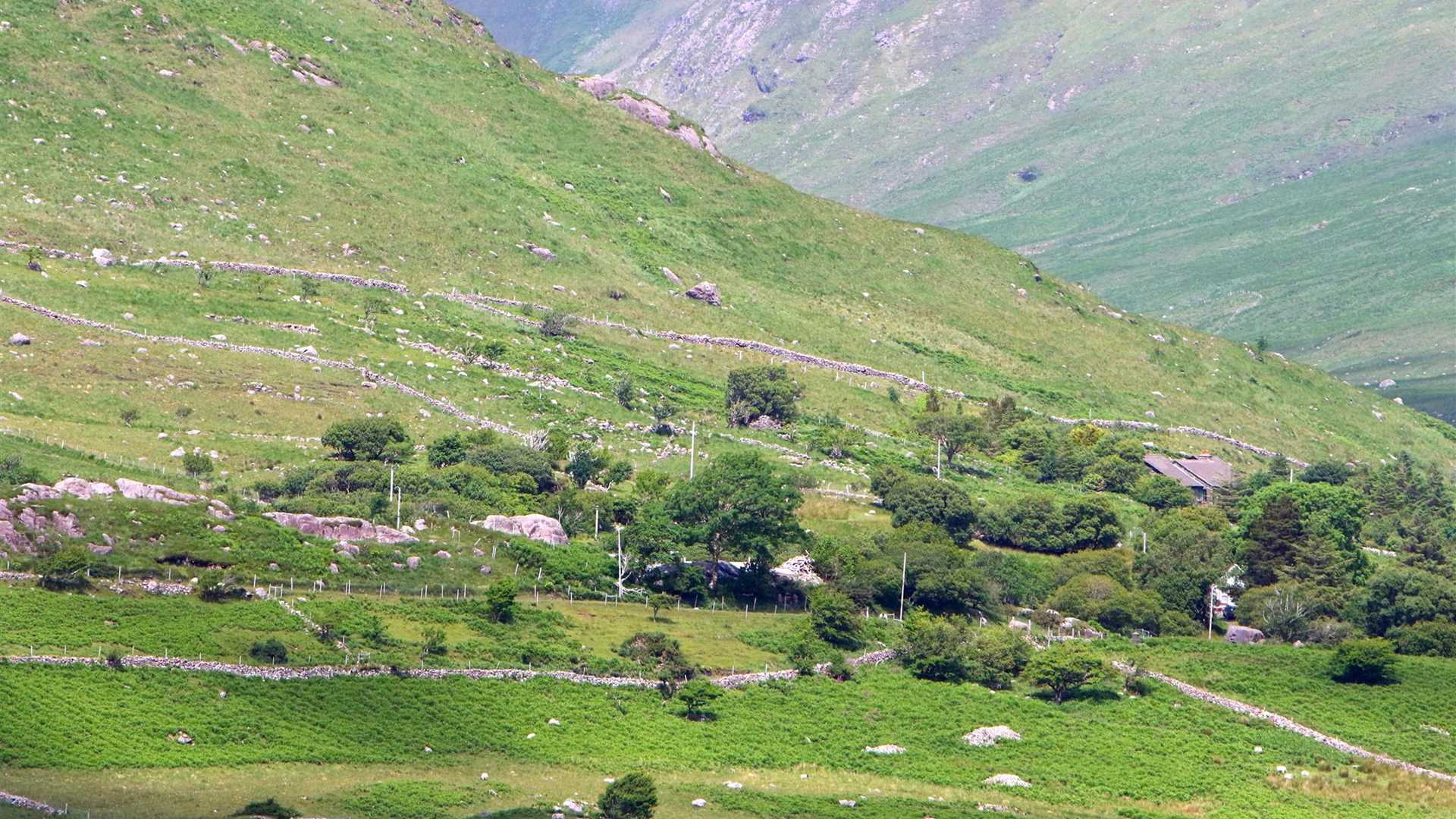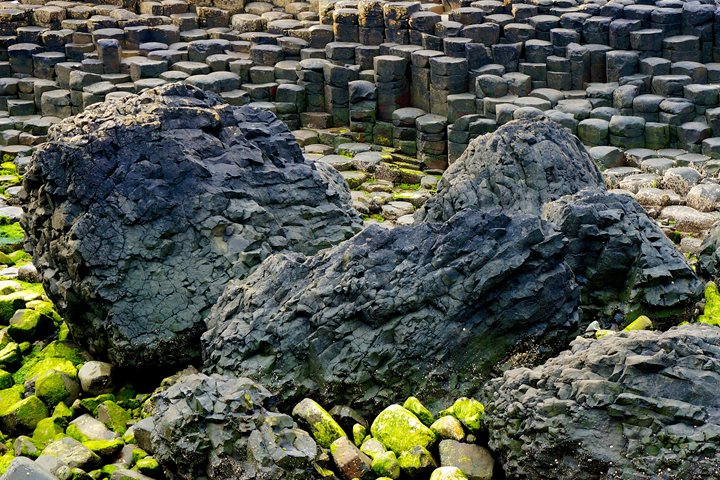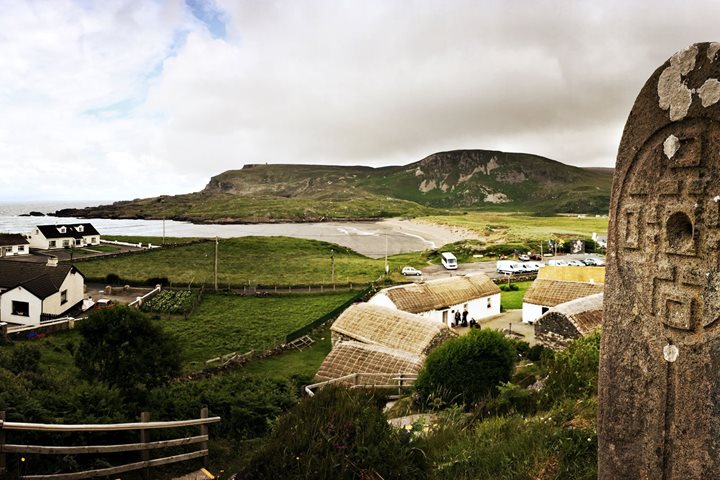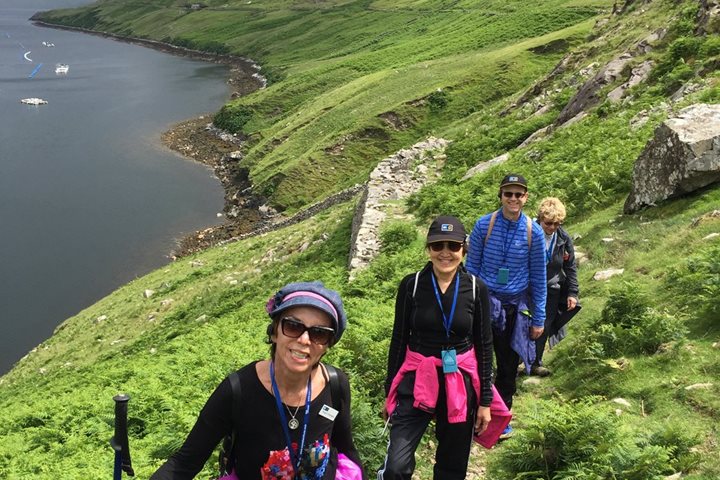A great black-backed gull skimmed above steel grey waters as the distinctive high pitched call of startled oyster catchers reverberated along the rocky inlet. We had arrived just offshore the small fishing village of Kilkieran, on the remote west coast of Connemara in County Galway. Generations of local men here have taken to their small traditional tarred canvas boats, known as currachs, to wrest a living from the sea, continuing a tradition extending back many millennia. This is an elemental landscape, earthy, tenacious, as are its’ people. Once ashore we began our explorations of this remarkable region by mini-motor coaches.
Local guides interpreted as we traversed the countryside. Climatic deterioration four thousand years ago was the catalyst for the formation of so-called blanket bogs, spongey accumulations of semi-rotted vegetation. With no access to woodland for timber, the tenant farmers who lived here on rented land in the eighteenth and nineteenth century, had the right to cut peat for fuel. Still utilized, peat cuttings were in evidence everywhere. The bogs are home to a wide diversity of plants and animals which are specially adapted to live in this harsh natural habitat and include butterworts and sundews, two insect eating plants.
A watershed in the history of the island of Ireland and its people was the Great Famine of 1845-49, caused by the failure of the potato crop, on which some 5.5 million people at the time were totally dependent. Between those years it is estimated that 1 million people died with a further 1 million emigrating, many to North America. Abandoned, tumbled down stone- walled cottages pepper the landscape, as do the long soil ridges known as lazy-beds on which the potatoes were grown, stark and sad reminders of this tragic event.
A coffee break was organized in the large town of Clifden before heading off to see Kylemore Abbey. Built in the nineteenth century as a private residence, Benedictine nuns established a community here during the First World War. It is now one of the most visited sites in the country. One of the highlights of the afternoon was visiting a rag tree on the shores of Killary Harbour, a 16 kilometer long fjord. Festooned with pieces of cloth which have been tied on, the traditional belief holds that a cure will be effected for the sufferer with an ailment by the spirit of the tree by the time his or her rag rots away. This practice has its origins in a Celtic belief in tree spirits, which is also where the phrase to ‘knock on wood’ for luck originates.
The last visit of the day was to a local farm where the owner explained, and demonstrated with his highly trained dogs, the skill of rounding up and penning sheep. His property lies on the side of Killary Harbour, in the midst of small, stone wall enclosed verdant fields.







